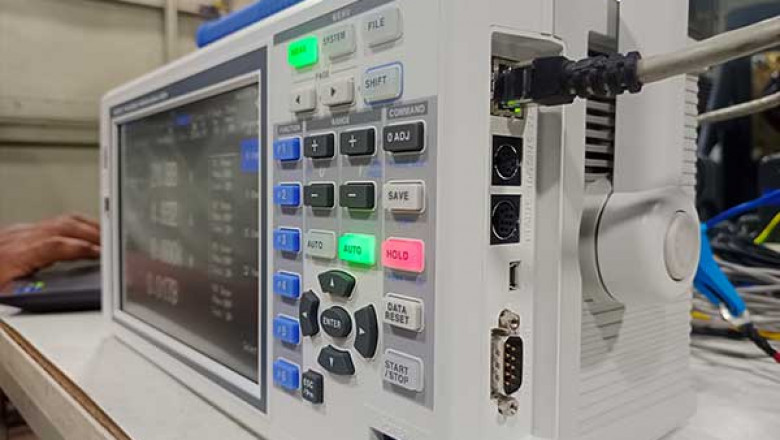views
The power quality equipment market is undergoing significant transformations as it adapts to the evolving demands of modern electrical systems. With rapid technological advancements, increased reliance on renewable energy, and growing concerns about energy efficiency, the market for power quality solutions such as uninterruptible power supplies (UPS), voltage regulators, surge protectors, and harmonic filters is expanding rapidly. Several key movements are shaping this market, influencing how businesses and industries approach power reliability, sustainability, and efficiency.
1. Growing Integration with Smart Grids
One of the most prominent movements in the power quality equipment market is the growing integration with smart grids. Smart grids use digital technology to monitor and manage electricity flow more efficiently, enabling real-time adjustments and improving overall grid stability. As industries increasingly embrace smart grid technologies, power quality equipment is being designed to work seamlessly with these systems. Advanced power meters, smart voltage regulators, and active harmonic filters are being developed to provide real-time data, helping utilities detect and correct power quality issues instantaneously. This integration allows for enhanced monitoring, predictive maintenance, and optimized energy use, making power systems more efficient and resilient.
2. Adoption of Energy Storage Systems
The adoption of energy storage systems (ESS) is another key movement driving the power quality equipment market. With the rise of renewable energy sources like solar and wind, which are inherently intermittent, there is an increasing need to store excess energy generated during peak production periods for later use. Lithium-ion batteries, supercapacitors, and flow batteries are becoming popular choices for energy storage, enabling businesses to better manage power fluctuations, stabilize the grid, and improve energy efficiency. The use of energy storage systems alongside traditional power quality equipment ensures that power is available even during periods of low renewable output, making systems more reliable and cost-effective.
3. Increasing Demand for Energy Efficiency
The drive for energy efficiency is another major force shaping the power quality equipment market. As businesses and industries face increasing pressure to reduce energy consumption and lower costs, there is a growing demand for power quality solutions that improve energy efficiency. Voltage optimization technologies, such as active power filters and voltage regulators, are gaining popularity as they help reduce energy waste, improve equipment lifespan, and lower operating costs. Additionally, advancements in UPS systems with higher efficiency ratings and eco-friendly designs are contributing to the overall trend of more sustainable power solutions.
4. Rise in Electrification and Digitalization
The rise in electrification and digitalization across various sectors is creating more demand for robust power quality solutions. Industries such as data centers, telecommunications, automotive, and manufacturing rely heavily on sensitive digital equipment and automated processes that require high-quality, stable power. Power quality equipment must be able to handle the increasing complexity and demand for uninterrupted, clean power. As automation, IoT devices, and digital infrastructure continue to expand, the need for real-time monitoring, precise voltage regulation, and harmonic mitigation will grow. This trend is prompting companies to develop more sophisticated and adaptable solutions.
5. Focus on Sustainability and Green Technologies
Sustainability has become a primary driver in the power quality equipment market. As governments and corporations focus on reducing their carbon footprint, there is a shift toward eco-friendly power quality solutions. Energy-efficient UPS systems, solar-powered energy storage solutions, and harmonic filters that reduce energy losses are examples of the growing trend toward green technologies. Manufacturers are increasingly prioritizing sustainable practices in the design and manufacturing of power quality equipment, not only to meet regulatory requirements but also to appeal to environmentally-conscious consumers and businesses.
6. Advancements in Data Analytics and IoT Integration
Data analytics and the Internet of Things (IoT) are also playing a critical role in the power quality equipment market. With the proliferation of connected devices, real-time data analytics allows for better monitoring and control of power quality. IoT-enabled devices, such as smart meters and remote sensors, provide detailed insights into power consumption, grid stability, and equipment health, enabling predictive maintenance and the ability to address power quality issues before they cause disruptions. This trend is particularly beneficial for industries that rely on uninterrupted power, such as healthcare, manufacturing, and IT.
Conclusion
The power quality equipment market is experiencing dynamic movements as industries, utilities, and consumers demand more reliable, efficient, and sustainable power solutions. From the integration with smart grids to the adoption of energy storage systems, increasing energy efficiency, and the rise of digitalization, the market is evolving to meet the complex needs of modern electrical systems. As these trends continue to shape the industry, power quality equipment will become even more advanced, offering businesses and industries the tools they need to ensure stable, clean, and cost-effective power for the future.






















Comments
0 comment